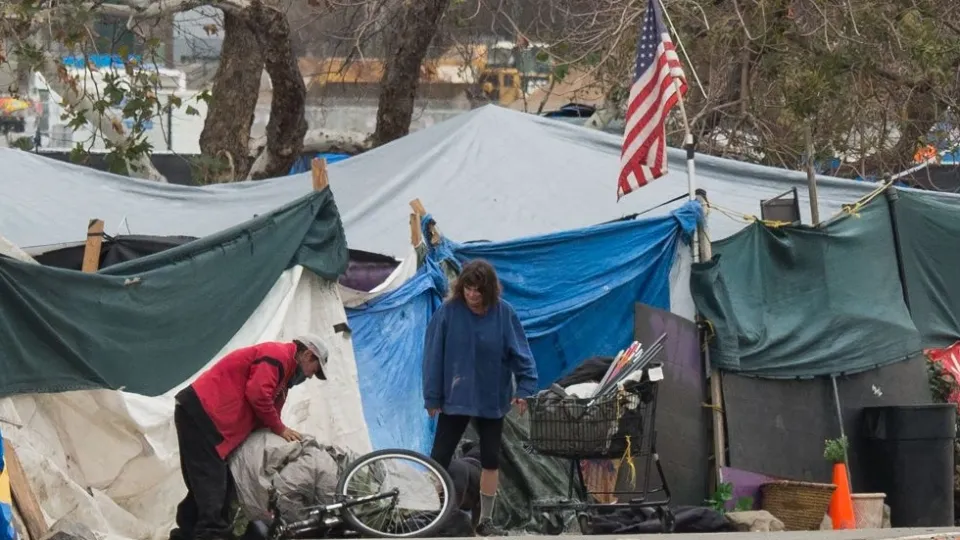The US poverty crisis deepens as millions struggle with debt, inequality, and outdated policies amid rising costs and economic uncertainty.
More than 63% of American workers say they could not cover a $500 emergency expense, highlighting the depth of the U.S. poverty crisis. Despite being the world’s richest nation by GDP, millions face daily financial insecurity, with credit card debt now exceeding $1 trillion. The official poverty measure, rooted in 1960s calculations, fails to capture the modern economic reality for millions. As the wealth gap widens and inflation strains household budgets, experts warn that systemic issues continue to trap families in cycles of poverty and debt.
The United States, often viewed as a symbol of economic abundance, faces a growing disparity between its wealth and the widespread financial insecurity of its citizens. Currently, 37.9 million Americans, or 11.6% of the population, live in poverty.
Historically, poverty rates had been improving, dropping from 48.8 million people in 2013 to 34 million in 2019. However, the COVID-19 pandemic reversed much of that progress. Vulnerable families saw their employment opportunities disappear almost overnight, leading to lasting economic hardship.
Poverty not only causes financial distress but also fuels anxiety, stress, and health problems. Federal programs aimed at economic security account for about 11% of the national budget, totaling roughly $665 billion annually. Yet child poverty alone costs the U.S. over $1 trillion, according to 2018 research.
One individual recounted how, following pandemic layoffs, their family struggled to find stable work. “We hated the job, but we had to keep it to survive,” they said, describing grueling 13-hour shifts for $15 an hour.
Income inequality remains a major driver of poverty. The top 10% of earners make over 13 times more than the bottom 10%, according to U.S. Census data. The pandemic exacerbated this gap, as corporations offered bonuses and raises while small businesses and public sectors could not compete.
The Gini index, measuring income inequality, rose by 1.2% in 2021—the first increase in a decade. Inflation has further widened the divide between the wealthy and the working poor.
How does the federal minimum wage compare to living wage estimates?
MIT researchers estimate a living wage in the U.S. at $24.16 per hour for a family of four, yet the federal minimum wage remains stuck at $7.25. Consequently, many families must work multiple low-wage jobs just to meet basic needs.
Racial disparities in poverty rates are also significant. Out of roughly 140 million Americans who are poor or low-income, over half are people of color.
Beyond wages, the United States lacks many social safety nets common in other wealthy nations. Welfare programs offer minimal assistance—one family of seven reported receiving just $250 monthly. Unlike European countries, there is no universal child allowance or comprehensive health care.
Moreover, existing aid systems often discourage upward mobility. Earning slightly more can disqualify individuals from vital benefits like Medicaid and SNAP, creating a perverse incentive to stay within poverty thresholds.
The official poverty measure, still based on 1960s food costs and pretax income, fails to reflect modern economic realities. Criticisms led to the creation of the Supplemental Poverty Measure in 2011, which accounts for geographical differences and government aid. Yet even this updated tool falls short, failing to capture full regional cost disparities.
Some experts argue poverty rates are overstated because many welfare benefits are not included in official income calculations. They suggest that until poverty is measured more accurately, policy efforts to eradicate it will remain ineffective.
Policy interventions during the pandemic demonstrated the power of government action. Expanded benefits temporarily lifted 45.4 million Americans out of poverty, showing that poverty can be addressed with the right policies.
Efforts like Social Security and Medicare have successfully reduced elderly poverty rates from 40% to around 10%, offering a model for broader reforms.
Advocates call for new approaches, such as using relative poverty measures tied to median income and expanding programs like the Child Tax Credit and minimum wage hikes. Universal basic income also garners increasing attention as a straightforward solution to income insecurity.
The phenomenon of lifestyle creep compounds financial vulnerability. Even individuals earning $100,000 or more increasingly live paycheck to paycheck. Spending habits shift subtly with rising income—small luxuries like dining out or upgrading subscriptions accumulate until savings goals are undermined.
Mental health suffers under constant financial pressure. Six out of ten Americans report that daily expenses harm their mental well-being. Emergency savings are scarce; 63% of workers say they would struggle to handle a sudden $500 expense.
As inflation drives up the cost of essentials, more households rely on credit cards to bridge financial gaps. This reliance contributes to the country’s record-high credit card debt, with interest rates topping 20%, and retail cards nearing 29%.
Credit card usage surged during the pandemic and has not subsided. Delinquency rates are rising, raising concerns among major retailers like Macy’s and Nordstrom.
Meanwhile, more than 70 million new credit card accounts have been opened since 2019. Borrowers face increasing challenges as wages lag behind inflation and debt costs soar.
Congress is considering the Credit Card Interest Rates Act, which would cap APRs at 18%. If passed, it could provide significant relief for consumers, though uncertainty remains around future Federal Reserve rate decisions.
As the holiday season progresses, economists will closely watch whether American consumers can sustain current spending levels—or if mounting debt will finally force a reckoning.
FAQ
Q1: How many Americans live in poverty in 2024?
A: As of the latest figures, approximately 37.9 million Americans, or 11.6% of the population, live below the poverty line.
Q2: Why is the U.S. poverty measure outdated?
A: The official poverty measure relies on 1960s food costs and pretax income, failing to reflect modern expenses like childcare, housing, and healthcare.
Q3: How has COVID-19 impacted poverty rates?
A: The COVID-19 pandemic reversed a decade of progress, significantly increasing poverty and widening income inequality across the United States.
Q4: What role does income inequality play in U.S. poverty?
A: Income inequality has grown sharply, with the top 10% earning over 13 times more than the bottom 10%, making upward mobility increasingly difficult.

